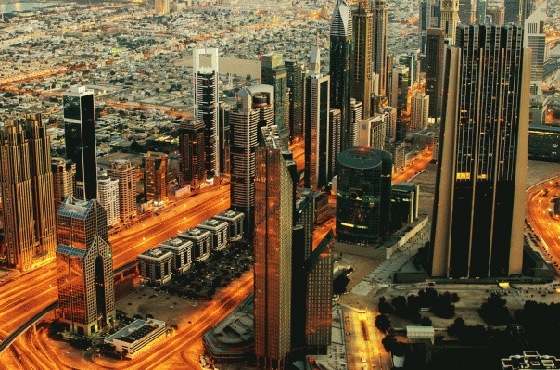A growing oversupply in some segments of Dubai’s residential real estate sector is encouraging developers to reposition their offering towards mid-range buyers, as the market witnesses broader price adjustments.
While the sector continues to emit mixed messages, demand for mid-market housing appears to be strengthening, with prices for apartments virtually unaffected by declines in other segments in the first half of 2015, according to a recent report by property consultancy Cluttons.
Overall, residential property prices in Dubai fell by 12.2% in the twelve months to June, real estate consultancy Knight Frank reported in early September. It was the steepest decline recorded among the 56 residential markets surveyed, signalling that the regulatory actions taken by the federal authorities, including the introduction of mortgage caps, could be having an impact.
Mortgage limits
In October 2013 the UAE authorities set minimum deposit ratios for mortgages, aimed at limiting market volatility and lending exposure to the sector. However, many in the industry believe the mortgage caps could now be exerting downward pressure on demand, as potential property buyers defer purchases until they can raise enough cash for the deposit or opt for less costly units.
Under the rules, expatriates are required to deposit a minimum of 25% for units valued at Dh5m ($1.36m) or less, rising to 35% for those priced above Dh5m ($1.36m), according to local press coverage of the reforms. Mortgages have also been capped for nationals, who are obliged to make 20% or 30% deposits, respectively.
At the same time, the Dubai Land Department doubled property registration fees, from 2% of a unit’s sales value to 4%, according to local media reports.
Global variables
External factors, such as weaker global economic growth, lower oil prices and foreign exchange concerns in other markets have also taken their toll on investor sentiment.
Russian, European, Indian and now Chinese buyers have all been affected by currency fluctuations, as the dirham, which is pegged to the US dollar, has strengthened in line with the greenback.
Weaker demand at the high-end of the market is also the result of a surge in new housing stock – a response to the 15% increase in average residential real estate values over the past two years, Cluttons noted.
In its “UAE Property Report 2015”, published in early September, Cluttons reported that there were already plans to build 41,000 units so far this year – 20,000 of which are likely to be delivered by the end of 2017.
Shifting demand
The industry is already seeing shifts in demand as the market adjusts. Figures indicate that the middle segment, led by apartments, is strengthening, as the mortgage caps affect demand for higher-priced property.
Average prices in the segment fell by a negligible 0.6% between January and June, though the decline was steeper for some luxury units, according to Cluttons. For example, one-bedroom apartments at the top end of the market fell by around 4.4% over the period, the agency reported.
Although some segments are seeing oversupply, mid-market demand has remained consistent. Ahmad Al Marri, general manager at Union Properties, told OBG, “While Dubai is facing a 10-15% increase in the supply of housing, particularly in the high-end segment, there is still demand for affordable and mid-range housing.”
Ali Tumbi, CEO of Aqua Properties, shared this view. “We might see a 15% decrease in sales in 2015/16, but housing demand for the middle class is still increasing.” However, he argues that prices could continue to drop due to regional instability.
“Despite some reports suggesting Dubai’s property market was facing another major setback, the drop of sales in the first half of the year was largely due to external economic variables,” Ziad Al Chaar, managing director of Damac Properties, told OBG.
Explaining the somewhat mixed messages coming out of the sector, Al Chaar added, “It’s a very uneven market at the moment, but it is also creating space for growth and the market will improve by the end of the year.”
Mid-market opportunities
Some local developers traditionally known for high-end and luxury projects are now actively pursing mid-market developments. With Dubai Municipality’s proposal earlier this year to introduce mandatory affordable housing quotas for all new residential developments, the segment could see even greater growth in the coming years.
According to local media, Damac is constructing several hundred affordable units at its 55m-sq-foot AKOYA Oxygen development, while Emaar Properties is considering further mid-range projects like Mira, where three-bedroom homes sold for a starting price tag of under Dh1m ($272,000) in 2013.
Union Properties launched its own housing project in Green Community West in late October. The company plans to sell more than 200 three- and four-bedroom townhouses and duplex apartments, priced at Dh9150-12,900 ($2500-3500) per sq metre, according to the company, with delivery scheduled for 2017.
Fred Durie, CEO of Dubai-based property developer Nshama, has also seen a strong increase in demand for mid-market homes, although he argues that this trend has not affected the quality of the real estate offering.
“Customers are discerning, and they consider a number of factors including build quality in making an investment decision,” he told OBG. “As end-use homes, they are particularly mindful of the amenities, layout and location. Mid-market homes provide great value for their money.”
Nshama’s flagship project Town Square, a multi-purpose development built over 2.9m sq metres, will feature several hundred affordable units, alongside more than 600 retail outlets, a 1.3-km stretch of cafés and restaurants, and 154,000 sq metres of parks.
Oxford Business Group
17 November






















































